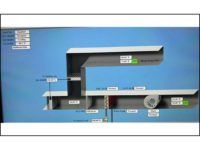When I started building systems commissioning 25 years ago, it did not take long to figure out that more was needed to confirm that the commissioned systems were complete and ready for testing than just the general contractor’s word for it. From the general contractor’s perspective, the systems were ready for testing whenever they were scheduled for testing — regardless of equipment start-up, controls programming, or balancing status.
That led to a lot of wasted trips to project sites only to discover that the subcontractors had not really finished their work and either hadn’t been consulted by the general contractor or hadn’t been comfortable giving the general contractor a realistic assessment of their prospects for completion. After repeating this exercise in futility a few times, it became clear that someone needed to be accountable for systems being ready for functional performance testing … and the pre-functional checklist was born.
Pre-functional checklists come in a variety of forms with a wide spectrum of contents and levels of rigor. One thing they almost universally share, however, is the requirement that the installing contractors fill them out in the field and sign off on their accuracy that the commissioned systems are complete, integrated, and ready for testing. Theoretically, the checklists improve the chances of true system readiness by having someone’s signature attesting to that fact.
At a high level, I think this did improve the situation somewhat, but it certainly hasn’t been a panacea preventing us from arriving at a job site for testing and discovering that there is no power to the equipment, controls programming isn’t complete, the fire alarm interface isn’t finished, the VFD hasn’t been started up, etc.
In the interest of continuous improvement and efficiency, I believe that technology has evolved to the point of potentially rendering the pre-functional checklist obsolete in major new construction projects. Because practically every new BAS is remotely accessible via the internet, it is possible for the commissioning professional to assess system readiness from the office. This can be done through observing system operation via the BAS graphics and trending capabilities.
Last month’s column (March 2014) addressed remote testing of systems not included in the field-verified functional performance test samples. Remote system readiness checks would simply be an abbreviated version of the same process prior to field testing.
BAS Graphics
The commissioning professional can log into the BAS remotely and observe each system’s graphic display. With an in-depth understanding of the sequences of operation, the commissioning professional can quickly observe the BAS sensor inputs and controlled device outputs and determine if the systems are performing as required. Any non-compliant issues will be documented and tracked and the systems will remain “un-ready” for field testing until they are resolved.
Trend Logs
In addition to (or instead of ) BAS graphics review, the commissioning professional can request that the controls contractor program and run trends in order to collect data for each commissioned system over a reasonable period of time prior to functional performance testing. Again, with a relatively quick evaluation of the collected data, the commissioning professional can determine whether the system is performing as expected or if there are obvious issues that need to be resolved prior to field testing.
BAS Readiness
In order to realize a meaningful remote system readiness evaluation process, the first system that needs to be “ready” is the BAS system, its integration into the building’s data network, and the connection of it all to the internet. The building owner’s information technology team is a key part of that process and would need to expeditiously complete their work well before substantial completion of the building as a whole.





